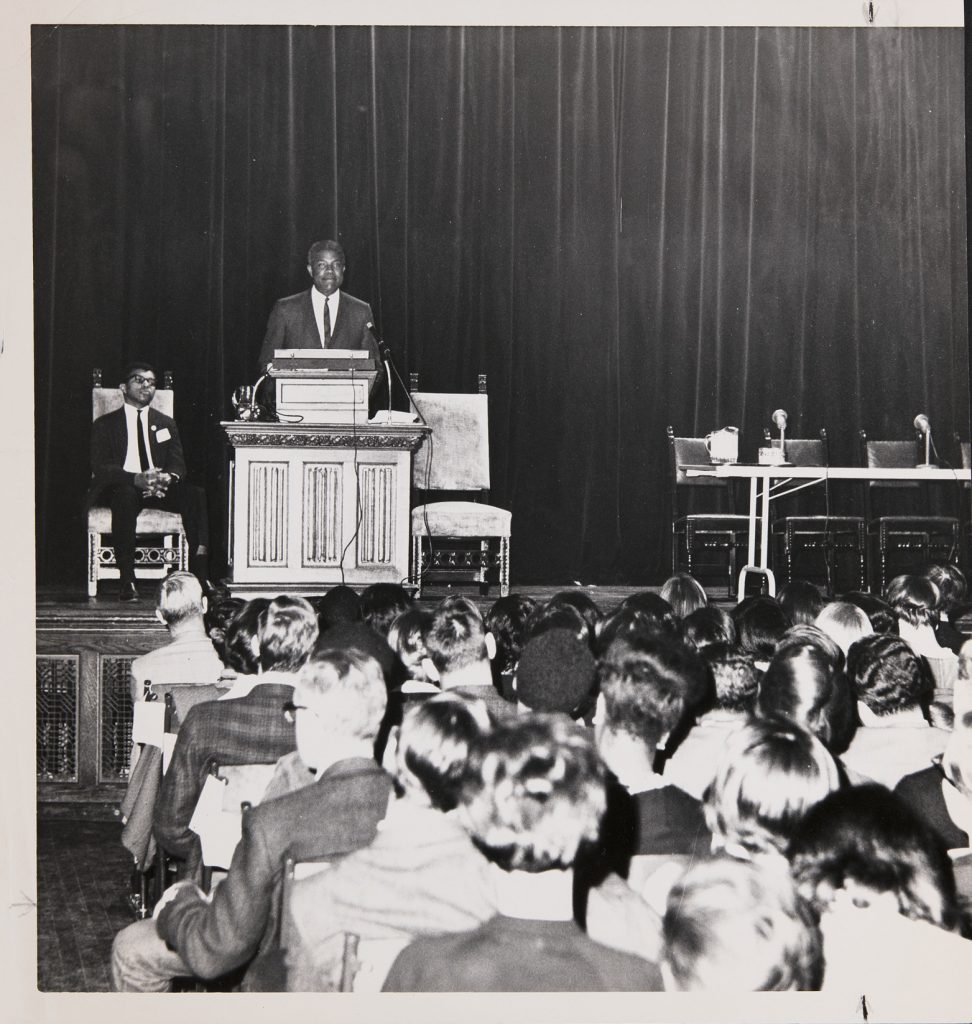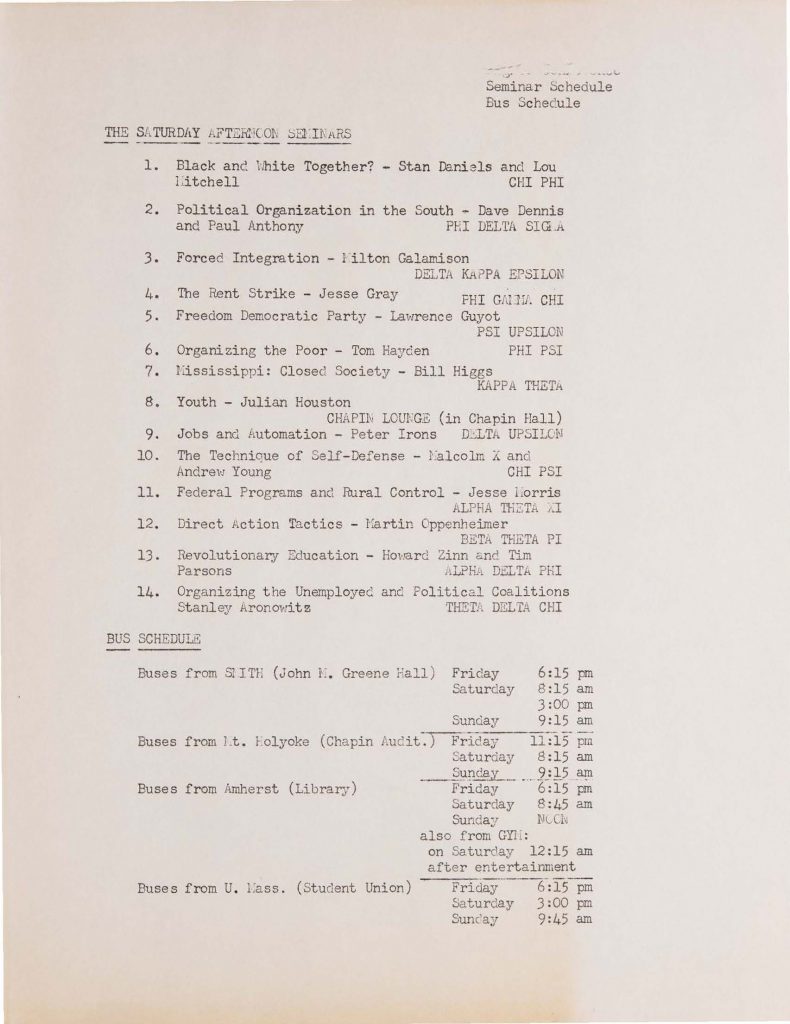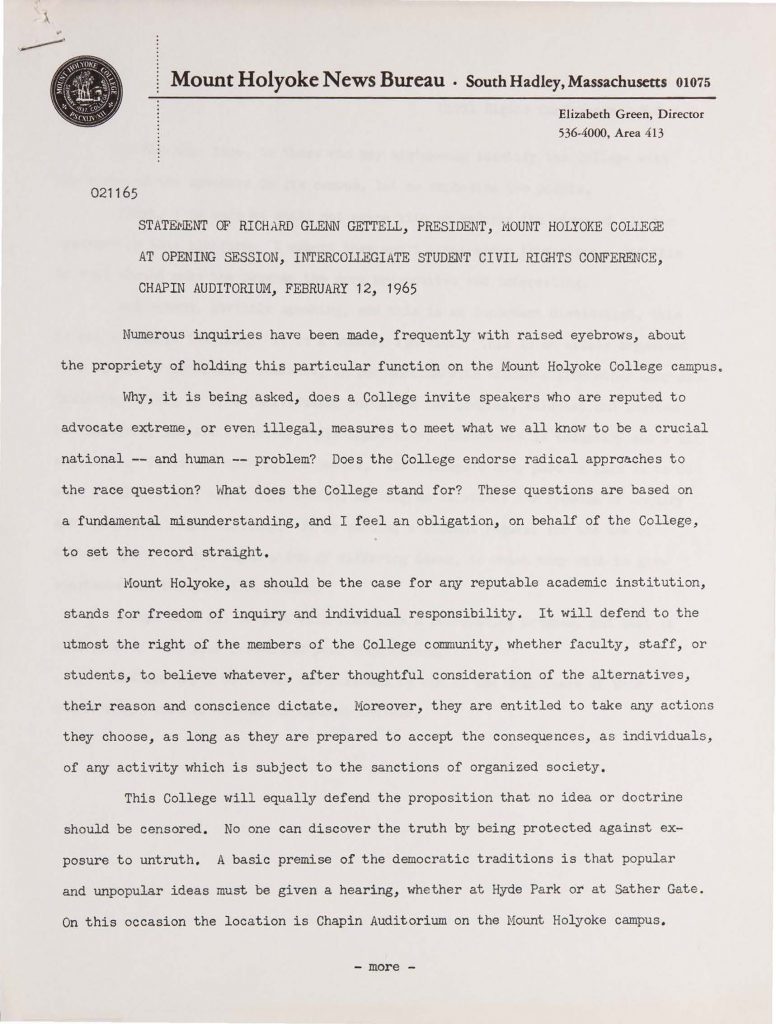Ossie Davis at Civil Rights Conference, February 12, 1965
Actor-playwright Ossie Davis is shown speaking at the Civil Rights Conference in Mount Holyoke’s Chapin Auditorium. Political activists Malcolm X and Michael Harrington were scheduled to speak but did not arrive in time due to travel issues. Instead, Davis gave both of their speeches in addition to his own. One of the Amherst student organizers, Junius Williams, described the conference overall as “an incredible success.”
Seminar Schedule from the Civil Rights Conference at Mount Holyoke, 1965
In February of 1965, Mount Holyoke co-hosted a Civil Rights Conference alongside Amherst, Smith, and the University of Massachusetts. A variety of guest speakers attended the conference and gave lectures, including Dave Dennis, Howard Zinn, and Ossie Davis. The Conference was organized by students from the four colleges. They created the conference because they believed that the “political, economic, and social areas into which the civil rights movement has expanded are so complex that it is necessary for people actively committed to civil rights to hear what some of the leaders in these newly opened areas have to say.”
Barbara Smith, Class of 1969, Interview Transcript, 2001
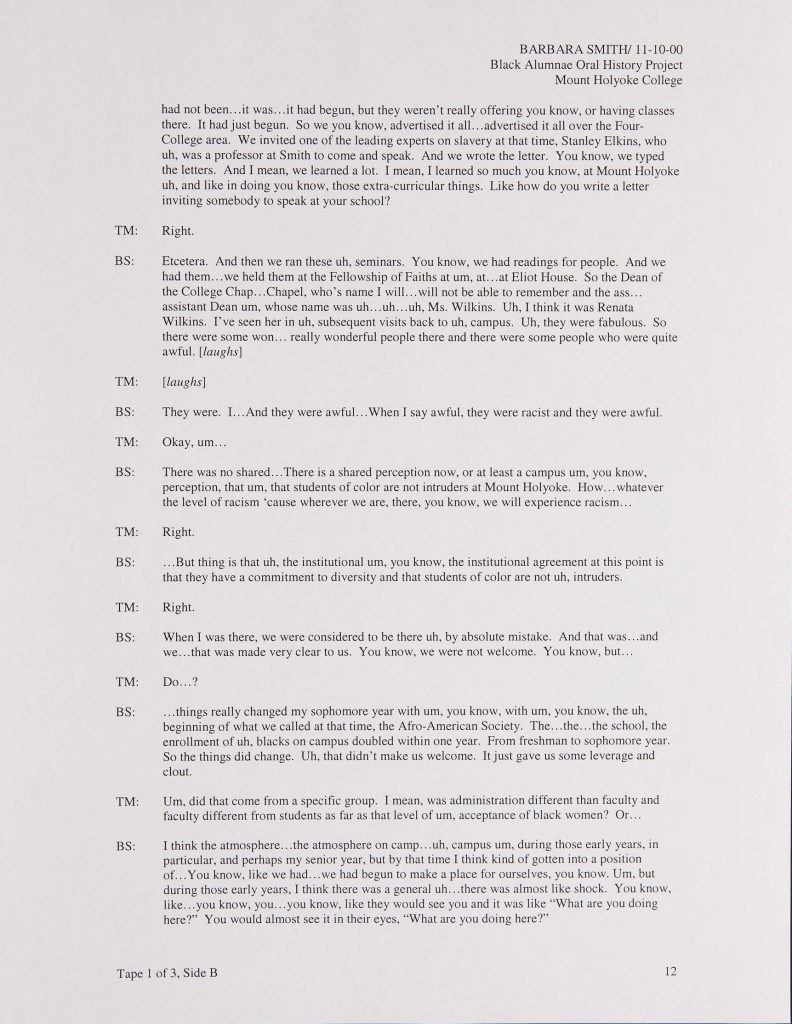
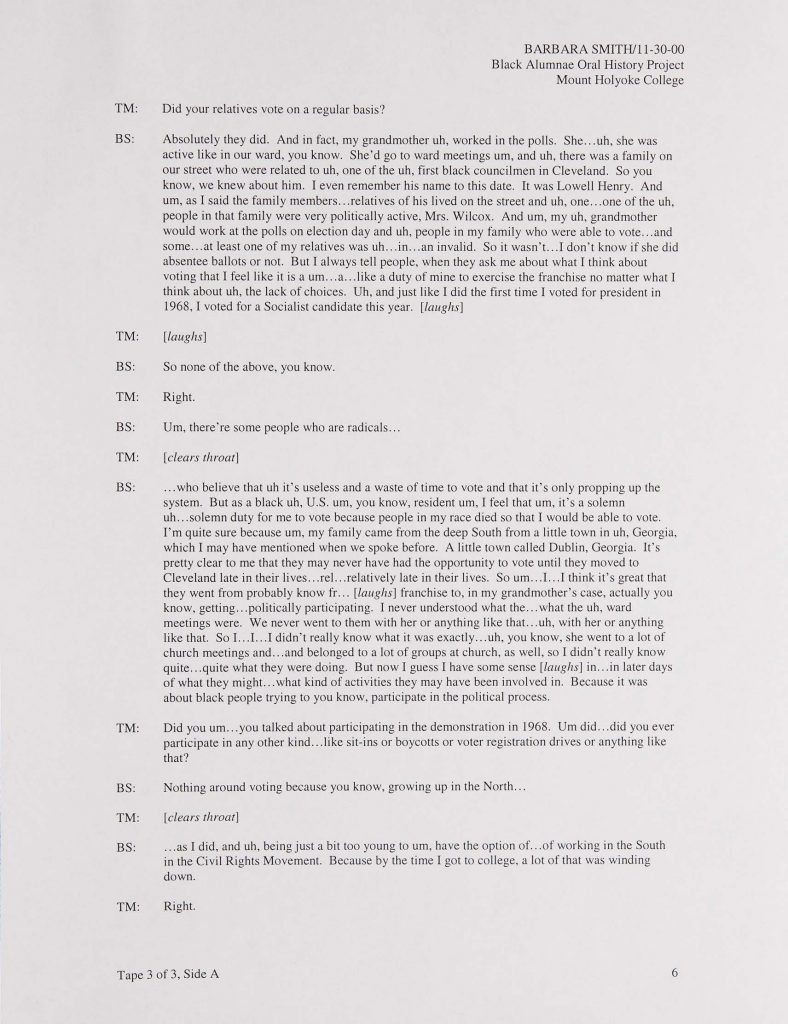
In these excerpts from the oral history project of Tiffany McClain, Class of 2001, Barbara Smith, Class of 1969 discusses what it was like being a Black student at Mount Holyoke in the 1960s. Smith describes racist assumptions from professors about her academic ability as “violations to the human spirit.” She notes some positive changes that occurred during her sophomore year: the number of Black students at Mount Holyoke doubled, which led to the formation of the Afro-Am Society. This change allowed them to create a space of their own, but did not stop the racist attitudes of white students, faculty, administration, and Mount Holyoke as an institution. With the creation of the Afro-Am Society and rally behind a Black cultural center, the Mount Holyoke administration noted that they believed the students were separated from the rest of the campus. Smith described these actions as necessary— “to try to build some kind of space where we could feel safe, not hated, not looked down upon.”
In 1968, Smith attended the Democratic Convention in Chicago in which she describes the violence protesters faced at the hands of the police. Many activists from groups such as the Students for a Democratic Society and the Student Nonviolent Coordinating Committee were present at the Convention to protest the Vietnam War. Also in 1968, Smith was able to participate in a national election for the first time, in which she voted for Eldridge Cleaver, a member of the Black Panther Party who was running under the Peace and Freedom ticket. She believed voting to be a “duty to exercise the franchise no matter what” she thought “about the lack of choices.”
Statement of President Richard Glenn Gettell, Opening Session of the Intercollegiate Student Civil Rights Conference, 1965
This statement from the Mount Holyoke President in 1965 shows that the Civil Rights conference caused some tension and controversy due to its radical speakers. President Gettell defended the conference on the basis of “freedom of inquiry and individual responsibility.” He specified that Mount Holyoke did not share the beliefs of all speakers of the conference, but rather that it was an opportunity for students to hear different views and form their opinions accordingly.
